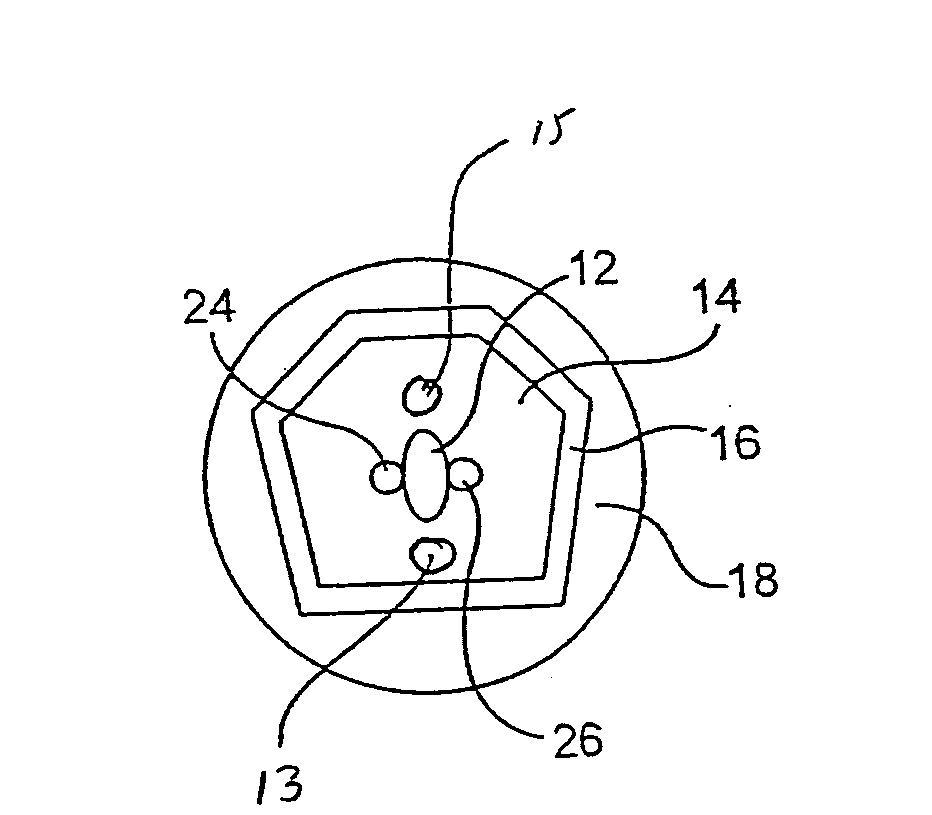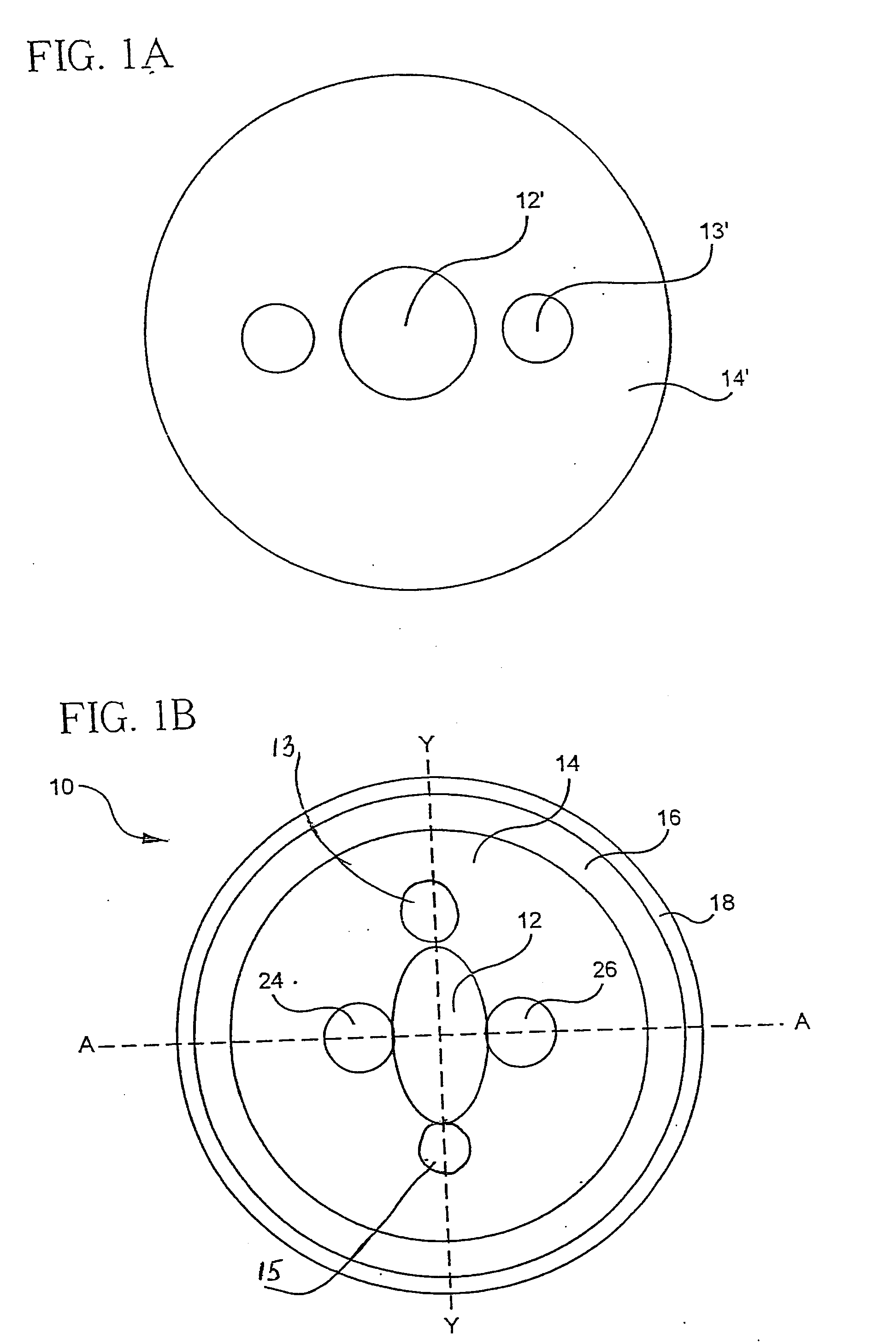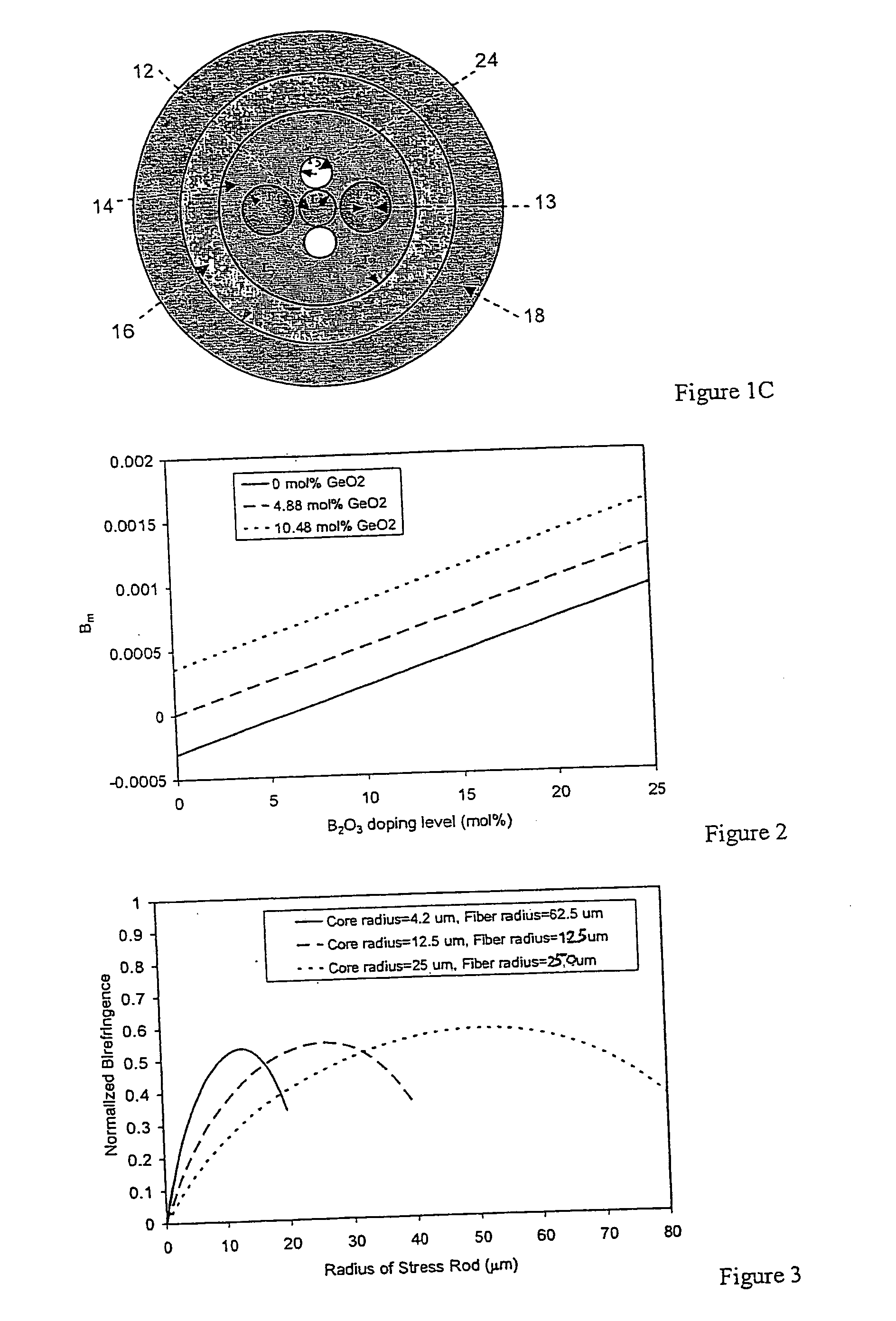Method of making an optical fiber
a technology of optical waveguide fibers and fibers, which is applied in the field of making optical waveguide fibers, can solve the problems of limiting the use of single polarization fibers for high power applications, difficult to achieve large mode field diameters, and difficult to obtain structures with conventional manufacturing methods
- Summary
- Abstract
- Description
- Claims
- Application Information
AI Technical Summary
Benefits of technology
Problems solved by technology
Method used
Image
Examples
example 1
[0099]FIG. 19A shows the cross-section of a highly dispersive, non-linear optical fiber made with the current invention having 6 holes adjacent to the high Ge-doped core in the single-clad fiber. Using this fiber structure, generally average refractive index delta from −30% to 0% percent can be made depending on the number of holes in the cladding. The holes in the inner cladding make the average index lower than the pure silica, creating an effective depressed cladding structure. The average index value depends on the how many air holes or the percentage of air volume in the inner-cladding layer. The low depressed cladding delta enables making very small effective area fibers. On the other hand, the fibers are much easier to make by the method described in this invention than those used in the conventional photonic crystal fiber making. The structure allows us to make an effective area as small as 5-10 μm2, and dispersion between 0-80 ps / nm.km at 1550 nm for nonlinear fiber-optic a...
example 2
[0100]FIG. 20 shows the process flow of the invented method for making dual air-hole double-clad fiber in Suppression of stimulated Raman gain in high-power fiber lasers when employing such fiber as the gain media. Dual-hole-assisted fiber is a typical micro-structured fiber including of a glass core and a cladding having two air-holes running along the fiber length. These holes 24, 26 are adjacent to the core 12 and are symmetrically placed relative to the core center along a common axis comprising the core and holes′ centers. An important property of dual-hole-assisted fiber is that of having a fundamental-transverse mode cut-off wavelength. Through proper design, this cut-off wavelength can be polarization resolved, thus providing the means to achieve single-polarization propagation. The spectral range between the cut-off wavelengths of each of the two orthogonal polarization modes defines the single-polarization bandwidth of this fiber. By carefully overlapping the single-polari...
PUM
| Property | Measurement | Unit |
|---|---|---|
| microstructures | aaaaa | aaaaa |
| microstructured | aaaaa | aaaaa |
| index of refraction | aaaaa | aaaaa |
Abstract
Description
Claims
Application Information
 Login to View More
Login to View More - R&D
- Intellectual Property
- Life Sciences
- Materials
- Tech Scout
- Unparalleled Data Quality
- Higher Quality Content
- 60% Fewer Hallucinations
Browse by: Latest US Patents, China's latest patents, Technical Efficacy Thesaurus, Application Domain, Technology Topic, Popular Technical Reports.
© 2025 PatSnap. All rights reserved.Legal|Privacy policy|Modern Slavery Act Transparency Statement|Sitemap|About US| Contact US: help@patsnap.com



